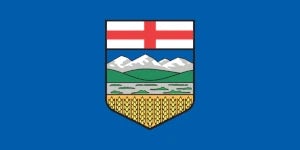Alberta used to index its tax bracket and benefit amounts to changes in the consumer price index (CPI), similar to the Federal government and most other provinces. But Alberta's Bill 32, the Financial Statutes Amendment Act, 2024 (No. 2), introduced a cap on the annual indexation of personal income tax brackets and personal tax credit amounts, limiting increases to 2% starting in 2025. This means that even if the Alberta Consumer Price Index (CPI) rises by more than 2%, the adjustment to tax brackets and credits will not exceed this 2% threshold. For instance, without Bill 32, the indexation rate for 2025 would have been 2.9%, reflecting the actual CPI increase.
Basic Personal Amount in Alberta
The portion of your income that is not subject to income tax is called the basic personal amount (BPA).
- The federal BPA is $16,129 for 2025 (up from $15,705 in 2024).
- In Alberta, the BPA is $22,323 for 2025 (up from $21,855 in 2024).
If your income is lower than the BPA, you will not have to pay any income taxes.
Both In Alberta and Federally, if you support a spouse, common-law partner, or eligible dependent, you may also claim an additional amount equal to your BPA minus your dependent’s income.
Alberta Personal Amounts 2024-2025
| Alberta Personal Amounts | 2024 | 2025 |
|---|---|---|
| Basic Personal Amount | $21,855 | $22,323 |
| Spouse or Common-Law Partner | $21,855 | $22,323 |
| Eligible Dependant | $21,855 | $22,323 |
The History of Alberta Provincial Income Taxes
Alberta’s notable income tax history began with Premier Ralph Klein (Progressive Conservative) in 1999. Klein introduced a flat tax, meaning anyone above a certain income threshold paid a fixed 10% provincial income tax. The following Premier, Ed Stelmach (Progressive Conservative), also removed health care premiums in 2009.
Rachel Notley (New Democratic Party) became Premier in 2015 and shook up Alberta income taxes. She introduced a progressive tax system whereby those earning a higher income pay a higher tax percentage. This introduction ended the flat tax system introduced by Ralph Klein 16 years prior. Today, Danielle Smith (United Conservative Party) reigns as Premier and has stood by Notleys’ progressive tax system. Alberta continues to be an excellent province for real estate investors and has one of the most straightforward eviction processes in Canada.
Alberta Child and Family Benefit
The Alberta Family Employment Tax Credit (AFETC) and the Alberta Child Benefit (ACB) were replaced by the Alberta Child and Family Benefit (ACFB) starting July 1, 2020. The ACFB is a tax-free benefit and is paid to families with children under 18.
Maximum Alberta Child and Family Benefit
| Base Component | Working Component | |||
|---|---|---|---|---|
| July 2023 - June 2024 | July 2024 - June 2025 | July 2023 - June 2024 | July 2024 - June 2025 | |
| 1 Child | $1,410 | $1,469 | $722 | $752 |
| 2 Children | $2,115 | $2,204 | $1,379 | $1,437 |
| 3 Children | $2,820 | $2,939 | $1,772 | $1,847 |
| 4 Children | $3,525 | $3,674 | $1,902 | $1,982 |
Source: Government of Alberta
You will receive the full base component if your family income is below $27,564 (up from $27,024 in 2024). If your family income exceeds $27,564, you will receive a reduced amount.
The Alberta Child and Family Benefit (ACFB) base component is available to lower-income families, regardless of whether they have employment income.
Working Component Benefit
To qualify for the working component, your family must have an employment income of more than $2,760.
- The working component amount increases by 15% for every additional dollar earned over $2,760, up to the maximum benefit.
- Once your family income exceeds $46,191 (up from $45,285 in 2024), the working component benefit is reduced.
You can use a CCB benefit calculator to estimate your entitlement.
Encouraging Workforce Participation
While all families are eligible for the base component, only those with employment income can claim the working component. This structure encourages workforce participation, allowing families to receive both components when they remain employed.
Payment Schedule & Administration
The ACFB is paid quarterly, in August, November, February, and May. It is a Canada Child Benefit (CCB)-related program administered by the Canada Revenue Agency (CRA) on behalf of the provincial government.
Canada Pension Plan and Employment Insurance
The Canada Pension Plan (CPP) is a monthly taxable income you receive in retirement. The amount you get in retirement is determined by your average salary, contributions to the plan, and the age you begin receiving payments. To be eligible for CPP, you must be at least 60 years old and have made valid pension contributions.
Alberta employees must contribute to the Canada Pension Plan (CPP) and Employment Insurance (EI). Your employer will match CPP contributions, while EI payments will typically be matched at a rate of 1.4x. Self-employed individuals must pay the total CPP contribution themselves, including the employee and the employer share. Additionally, those who are self-employed can optionally not contribute to EI.
